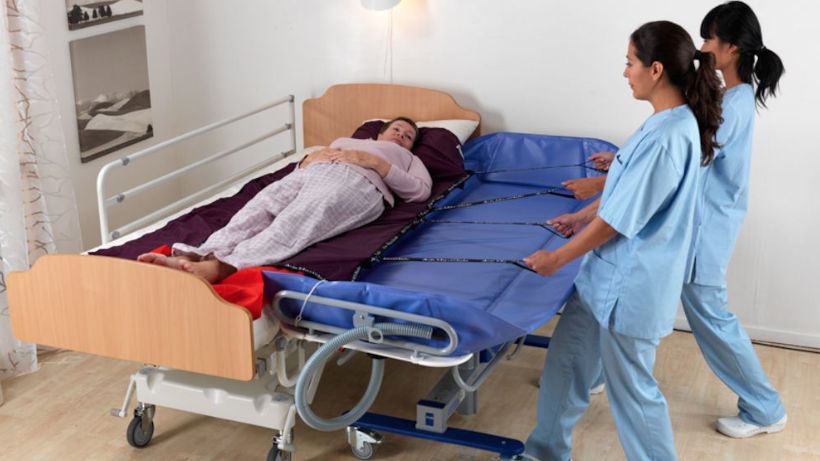 Preparing Your Patient With Thalidomide Embryopathy For Anaesthetic And Surgery
Preparing Your Patient With Thalidomide Embryopathy For Anaesthetic And Surgery
Key Facts For Medical Professionals
Thalidomide affected individuals are increasingly likely to need elective joint surgery as they age and as a result of complications from dysplastic joints. In addition, these reasons may also cause them to present to the Emergency department, with both thalidomide and non-thalidomide related conditions that require surgical intervention.
Medical Advisers to the Thalidomide Trust have identified key issues that clinicians should be aware of when preparing to operate on a thalidomide affected individual.
Early preoperative assessments are recommended
Undertaking these assessments early can avoid unnecessary delays and cancellations of planned surgery.
Anaesthetics
The Trust strongly recommends an early preoperative assessment by an experienced anaesthetist. This is in order to identify potential issues along with ensuring the hospital has facilities to cope if complications arise.
Post-operative rehabilitation and support
To achieve the best post-operative outcome, appropriate rehabilitation and support should be carefully pre-planned for the for post-operative period. This should include physio and occupational therapy input where at all possible, as there is often a need for specially adapted, non-standard, aids and equipment.
 Psychological issues
Psychological issues
Thalidomide affected individuals may have significant anxiety around venepuncture and having anaesthetic due to traumatic previous experiences. Therefore, a sympathetic and caring approach is crucial.
Anatomy
Thalidomide affected individuals may display the following:
- Arterial and vascular abnormalities together with abdominal organ displacement/ absence can be present in Thalidomide Embryopathy in addition to the visible damage1 (e.g. kidneys, absent gall bladder etc.).
- The commonest vascular abnormalities involved renal vessels and supra-aortic arteries but despite these abnormalities, these organs appear to function normally1.
- The external pattern of damage does not necessarily correlate with the internal pattern1.
Anaesthetic and intubation issues
When seeing a thalidomide affected individual, the following may need to be considered:
- Venepuncture can be very challenging due to both shortened limbs and abnormal vasculature as well as the vessels going into spasm. If necessary, central venous access with ultrasound guidance should be considered.
- Intubation may be difficult as extension of the neck may be limited due to cervical spine abnormalities and skull dysplasia. Therefore early assessment from an experienced anaesthetist is important.
- Spinal abnormalities can create potential challenges to spinal or epidural anaesthesia.
- Equipment and facilities to cope with unexpected complications must be readily available.
- Where phocomelia is present, it may difficult getting accurate blood pressure readings from the arms or legs. As a result, direct arterial measurement may need to be considered.
- Thalidomide affected individuals may have impaired temperature control, can sweat profusely, and may require temperature monitoring.
Moving and handling
Moving and handling should be done with extra care given joint dysplasia, likelihood of pre-existing arthritis and the potential to cause further damage or injury.
Standard equipment such as hoists and slings may not be appropriate, especially in those beneficiaries who are 4 limb affected. Moving techniques using equipment such as the maxi slide sheets have been used successfully as an alternative.

Occupational therapists will be able to advise about moving patients safely and additional equipment may be needed.
Alternatively you can speak to a member of the Health and Wellbeing team at the Trust on 01480 474074.
Rehabilitation, Physiotherapy and Occupational Therapy
- The Royal National Orthopaedic hospital (RNOH) has operated on several thalidnomide affected individuals and recommends, due to the unique disability, that they have a pre-operative physiotherapy and occupational therapy assessment to look at rehabilitation needs.
- Many may need intensive physiotherapy post operatively.
- Non-standard and special equipment, like gutter frames, may be needed to mobilise after surgery as short arms mean they cannot use standard equipment, such as crutches. This type of equipment may need to be ordered in advance of planned surgery so early planning is key.
- If orthopaedic surgery is being considered, it is important to discuss what functionality will be left. For example, when considering a hip replacement in those individuals who use a leg as an arm, as they may not be able to perform the ADLSs they once did.
Further information
If you would general advice or would like to discuss a specific patient, please contact the Thalidomide Trust and ask to speak to a Medical Adviser on 01480 474074.
There is a comprehensive range of further information and advice on the For Professionals area of the Thalidomide Trust website.
The Thalidomide Trust can also put you in touch with surgeons and anaesthetists, physiotherapists and occupational therapists who have treated thalidomide affected individuals. They may be able to offer advice and input if this would be helpful.
References
1. Weinrich JM, Beyer R, Well L, Tahir E, Lindemann M, Wilke U, Adam G, Bannas P, Lund GK. Assessment of Congenital Vascular and Organ Anomalies in Subjects with Thalidomide Embryopathy Using Non-Contrast Magnetic Resonance Angiography. Circ J. 2018 Aug 24;82(9):2364-2371. doi: 10.1253/circj.CJ-18-0414. Epub 2018 Jul 10. PMID: 29998932.
For Professionals

Information, advice and support from the Thalidomide Trust for all professionals treating or caring for people affected by thalidomide damage
